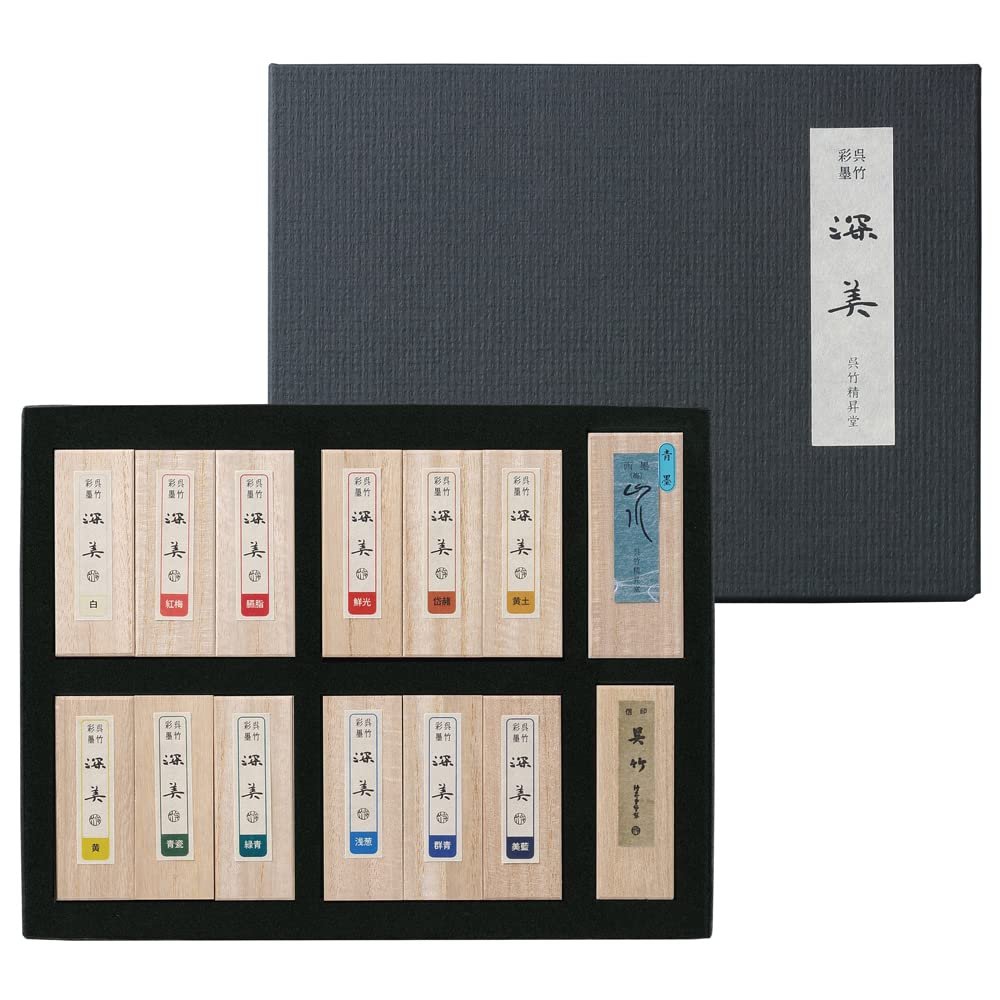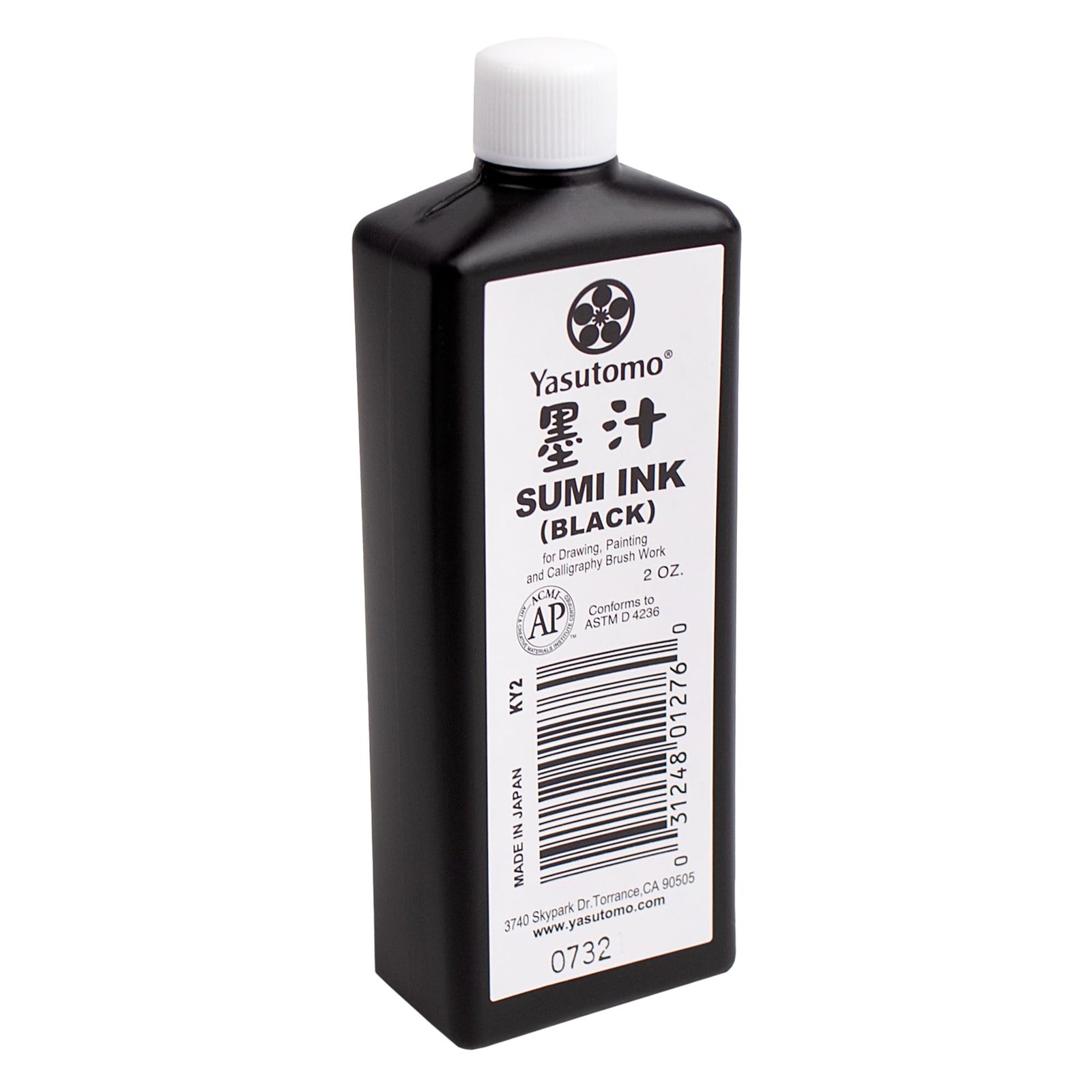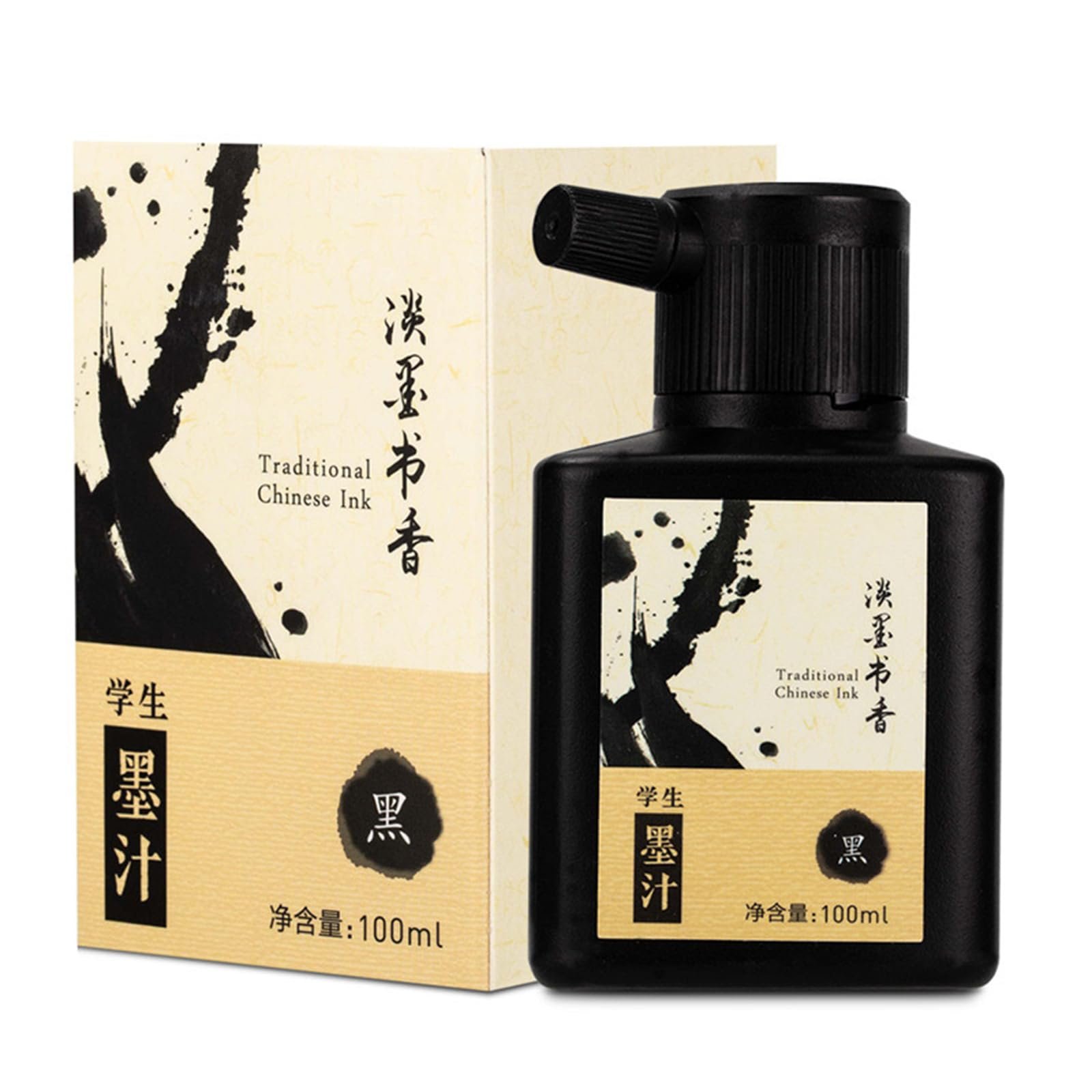Sumi ink has a rich history in traditional art, particularly in East Asian calligraphy and ink painting.
The deep blacks and smooth application of sumi ink can elevate artistic expression, offering a unique blend of fluidity and richness that few other mediums can match.
As I explored this world, I found that artists need to choose sumi ink wisely.
The quality of sumi ink can significantly impact the final artwork.
Kuretake, a well-known brand in the realm of sumi ink, stands out for its commitment to quality and craftsmanship.
Their inks are designed to meet the demands of both aspiring artists and seasoned professionals, providing consistent results that inspire creativity.
When selecting the right sumi ink, important factors to consider include the ink’s viscosity, lightfastness, and whether it’s suitable for various surfaces, such as rice paper or canvas.
Paying attention to these specifications can help ensure that you choose the best sumi ink for your artistic needs.
After testing several options, I’m excited to share my findings on the best Kuretake sumi ink choices for traditional art.
Best Kuretake Sumi Ink for Traditional Art
I’ve put together a list of the best Kuretake Sumi inks that I think will elevate your traditional art practice.
These inks are perfect for calligraphy, painting, and other art forms that require a rich, deep black color.
Let’s dive into my top picks!
Kuretake Sumi Ink Set
This Kuretake Sumi Ink Set offers a fantastic way to elevate traditional art, delivering vibrant colors and quality that truly shines.
- Rich color selection for various artistic styles.
- High-quality pigment ensures lasting artwork.
- Beautiful packaging that makes it a great gift.
- Higher price point compared to basic inks.
- Requires some practice to master blending techniques.
- Limited quantity of each color might not suit heavy users.
I recently tried out the Kuretake Sumi Ink Set, and I have to say, the quality is impressive.
The colors are exceptionally vivid and provide a wonderful depth when diluted.
I enjoyed experimenting with different techniques like shading and blurring, which this ink supports beautifully.
Using the ink sticks was a delightful experience.
The process of grinding them to create the perfect consistency allows for a unique interaction with the medium.
Initially, it took a bit of getting used to, but once I found my rhythm, the results were stunning.
The presentation of the inks is another highlight.
Each stick is individually wrapped and housed in a lovely paulownia wood box, which adds a touch of elegance.
It feels like each color is a little treasure, making it tempting to display rather than just store away.
Overall, if you’re serious about traditional art and don’t mind investing a bit for quality, this Kuretake set is worth considering.
The vibrant colors and quality craftsmanship enhance my work, making it a pleasure to create.
Kuretake Natural Ink Stone
This ink stone is a solid choice for anyone stepping into the world of traditional calligraphy.
- Excellent grip and durability for extended use.
- Simple to master for both novices and experienced users.
- Beautiful design makes it a good gift option.
- Some users report discoloration with certain ink sticks.
- May arrive with minor damage if not properly packaged.
- Size might be a bit small for those needing a larger surface.
Using the Kuretake Natural Ink Stone has been quite enjoyable.
The moderate hardness allows for smooth grinding of ink sticks, making it easy to achieve the right consistency.
I appreciate that it’s made from natural stone, which tends to hold up better than synthetic alternatives.
Its compact size of about 4.5 inches makes it portable, fitting well on my workspace without taking up too much room.
While it works great for most ink sticks, I did notice a slight discoloration on the surface after grinding a few colored inks.
This was a bit surprising, but it didn’t really affect the quality of my ink.
Just a heads-up if you plan to mix colors frequently.
Clean-up is straightforward.
I just wipe it down with a cloth after use.
Just make sure to dry it thoroughly, as any moisture left can lead to wear over time.
Overall, I find it a reliable companion in my calligraphy endeavors, and for its price, it’s hard to beat the quality.
Yasutomo Sumi Ink
This ink has been a great addition to my art supplies for traditional techniques, offering a depth of color and versatility that I love.
- Water-resistant once dry, making it ideal for various layering techniques.
- Smudge-proof on unsized paper, enabling clean and precise lines.
- Versatile for mixing and varying the opacity.
- The bottle size might feel smaller than expected.
- Diluting for lighter tones can dilute the depth of color.
- Some users may find it less effective in printers as a replacement for black ink.
Using the Yasutomo Bokuju Liquid Ink has elevated my calligraphy and artwork significantly.
The rich black pigment flows beautifully with my ink brushes, and I appreciate how it stays put once dry.
Whether I’m layering it with other mediums or applying it straight from the bottle, it consistently performs well.
What I enjoy most is its ability to be diluted for softer washes.
It creates lovely gray tones when mixed with a bit of water, giving me more flexibility in my projects.
The matte finish is perfect for detailed work, and I often turn to it for intricate designs and calligraphy.
Despite its small size, which some may find surprising, the quality remains top-notch.
I’ve used it for years, and it never disappoints.
For anyone wanting to explore sumi ink, this is a solid choice.
SEAMEW Sumi Ink – Versatile Elegance
If you’re looking for a reliable sumi ink that delivers quality and versatility, SEAMEW’s ink is definitely worth considering.
- Great for both calligraphy and landscape painting.
- Large 100ML bottle offers excellent value.
- Rich pigmentation provides stunning depth.
- Might take some time to get used to the flow.
- Requires careful application to avoid smudging.
- Not ideal for fine detail work with very small brushes.
I’ve used SEAMEW’s sumi ink recently, and I have to say it’s been a pleasure.
The consistency is smooth, allowing my brush to glide effortlessly across the paper.
I often switch between Chinese calligraphy and Japanese landscape strokes, and this ink handles both styles beautifully.
Whether I’m going for bold characters or soft washes, it responds well to the touch.
One thing that stands out is the ink’s pigmentation.
It produces a deep black that’s rich without being overly glossy.
I’ve tried various brands, and it’s impressive how this one maintains its intensity even on thicker papers.
The size of the bottle is also a big plus; it feels like I’ll be using this for a long time.
That said, it’s essential to be mindful of how much I load on the brush.
A little goes a long way, and if I’m not careful, I can end up with some smudging.
It doesn’t take away from the quality, but it’s something to keep in mind, especially if I’m working on intricate details.
Kuretake Sumi Ink 60ml
I highly recommend this Kuretake Sumi Ink for anyone looking to enhance their traditional art projects.
- Excellent for both brush and dip pen applications.
- Dries quickly, allowing for layering without bleeding.
- Versatile, compatible with various mediums including alcohol-based markers.
- Not truly waterproof; can bleed when wet.
- Some users report it may not adhere well with certain brush tips.
- The consistency may take some getting used to, especially for beginners.
My experience with the Kuretake Sumi Ink has been quite positive.
The ink flows smoothly, which makes drawing lines a breeze.
It works beautifully with both brushes and dip pens, offering a rich black that stands out on paper.
I found it dried relatively fast, enabling me to layer my artwork without worrying about earlier applications smudging.
Another notable feature is its compatibility with alcohol-based markers.
Once the ink dries, I can confidently add colors on top without any bleed-through.
This flexibility has made my art process more enjoyable and creative.
It sparks ideas because of its reliability and how well it interacts with other mediums.
That said, I did notice some limitations.
While it advertises as waterproof, I found it can turn a bit gray if any water-based mediums are applied on top.
Additionally, I experienced some difficulty using it with certain brush pens, so that might require experimentation.
Buying Guide
Choosing the right sumi ink can make a big difference in traditional art.
Here are some key factors I consider when selecting the best ink.
Ink Type
- Liquid vs. Stick: Liquid inks are ready to use, while sticks require grinding.
- Pigment vs. Dye: Pigment-based inks are usually more lightfast.
Color Quality
I always check for richness and depth.
Look for inks that offer a true black or deep colors that suit your style.
Flow and Consistency
The ink should flow smoothly from the brush.
Test different inks to find one that has the right viscosity for my needs.
Drying Time
Drying time can impact my workflow.
A faster-drying ink is great for layering, while slower inks allow for blending.
Packaging
Consider how the ink is packaged.
Bottles with a narrow opening can be easier to control, while jars might be better for larger quantities.
Price
Inks can vary widely in price.
I weigh the cost against quality, ensuring I’m getting good value.
Reviews and Recommendations
I find feedback from other artists helpful.
Look for reviews or ask for recommendations to make a more informed choice.
By keeping these factors in mind, I can find the best sumi ink for my traditional art projects.






